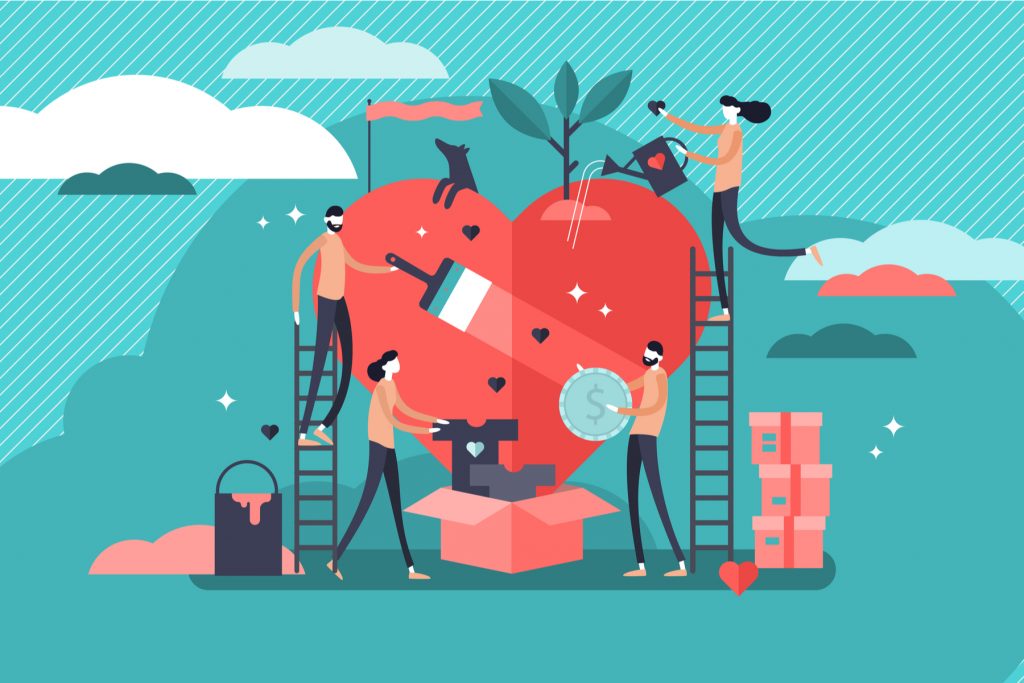
Photo courtesy of Shutterstock
Paani, a nonprofit, built a well in George Floyd’s name in Khyber Pakhtunkhwa, Pakistan. Floyd was unjustly killed by the police and propelled the continuous Black Lives Matter movement. The founders of Paani say it’s their responsibility to stand in solidarity with Black people. Founded in 2017, the organization has a niche for building wells in Pakistan in the name of personalities they look up to, like Lebron James and Jaden Smith. It’s a way to honor their legacy as prominent figures vocal on social justice.
The organization sprouted over fish sandwiches at a local Wendy’s in Michigan. The University of Michigan students Sikander “Sonny” Khan, Omar Ilyas, Arhum Arshad, and Nauman Khan were discussing their identities as Pakistani-Americans. They learned that there would be an official scarcity of water in Pakistan by 2025 and felt an urge to aid. So they decided to build wells there.
One of the co-founders, and an incoming product marketing manager at Microsoft, Sonny says they have a responsibility to those in Pakistan.
“What lights a fire under my butt and gets me going [is] helping people as much as I can [and] give back to the community that has given me more motivation than anything else,” said Nauman. “I can work with my friends to help people. A 9-5 is great, but not exciting. Helping people in Pakistan with the crises they face is what gives me motivation.”
https://www.instagram.com/p/CBRYyaBDXlH/
At the nonprofit’s start, the group sold donuts in the hallway, held fundraisers, and sold branded apparel. In one year, Paani helped build a humble 10 wells in Pakistan. By the end of their second year, they produced 199 wells, and as of July 2020, Paani has completed more than 700 wells in Karachi, Sindh, Balochistan, and Punjab.
Because the group has no overhead costs and does not cut its members a paycheck, all donations go entirely to the cause. They partner with organizations locally in Pakistan to build the wells and maintain contact to see the building through from start to finish. They even enlist third party help, such as local university students in Pakistan, to check on the progress and keep them in the loop. Once a well is completed, the organization distributes educational material on the water.
[Read Related: Violated Hopes: My Struggle to Report on Female Genital Cutting in Pakistan]
The beginnings of the organization were not seamless, according to the founders. They say that one of the hardest aspects of working with Paani is that it’s an emotionally-driven cause. In the first two years, they worked to control those emotions and learned that it’s best to keep your mind focused by identifying specific needs. While, as a group, they might have 50 new ideas to help out in Pakistan, they agreed that staying grounded is key.
https://www.instagram.com/p/B_8ETZRgvXL/
In the last two years, Paani has won a $10,000 monthly ad grant from Google, a $5,000 grant from Microsoft for cloud storage, and a $5,000 award from the University of Michigan’s optiMize Challenge. Aside from building wells, Paani is involved in digitizing medical records in Pakistan, accessing medical supplies, and providing women’s hygiene products, among other initiatives. The organization held a hygiene drive on campus to collect women’s hygiene supplies and increase awareness about female hygiene issues in South Asia.
“What stood out [to me] is the type of impact we can make as younger people,” says Sonny. “If you think from an outsider’s perspective, we were college students—we didn’t know we could make a significant impact, and most people didn’t. Don’t let being young deter you from thinking about what you can do to impact lives.“
Additionally, the organization is building a reverse osmosis plant in Multan. During this past Ramadan, they raised more than $250,000. Furthermore, Paani has provided more than 1.5 million meals to daily wage laborer families, offered $500,000 in medical supplies to clinics tackling COVID-19, and is building 10 rainwater storage units in Sindh.
Paani gives the four founders a platform to connect and give back to their roots. It’s helped them grow a love for their homeland.
“We have the opportunity to help,” said Sonny. “If you put your mind to it, you can do it. If you’re passionate about it, it will succeed.”




